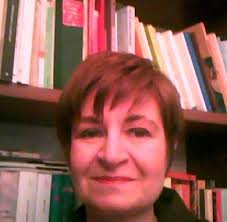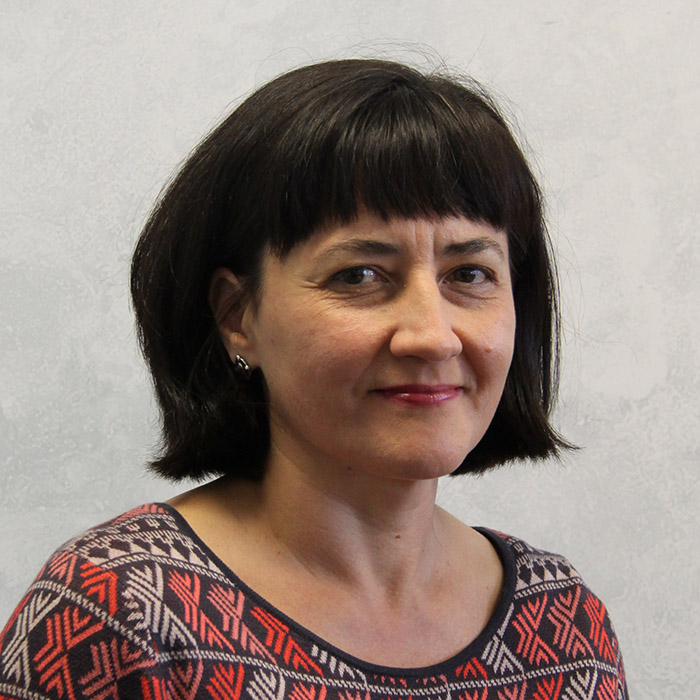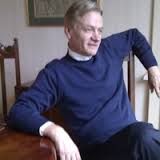KEYNOTE Speakers
Università degli Studi di Napoli Fedcerico II
Is a her-story of science possible?
The double bind effect in the pretended gender neutrality of science discourse
The presentation addresses the contribution of discourse analysis to science studies and to ‘women-in-science’ as a research topic.
The first one results in revealing the multi-layered and complex nature of scientific discourse, contrasting the dominant view presenting it as a consistently evolving account about nature from which experiments eliminate inconsistencies and paradoxes.
The second one points to the embeddedness of gender issues in the structural and organizational relationships shaping scientific and academic environments, notwithstanding dominant accounts relegating them to the private sphere while concealing the gendered character of the social organization of techno-science. General support given to the still prevailing view of the scientific endeavour as a gender-neutral one makes it difficult the overcoming of the private/public dichotomy for a positive confrontation with the relevance of the gender dimension in scientific practice.
The relevance of the private-public dichotomy to the definition of science as public knowledge, together with the ambivalence surrounding the shifting borders between its implied demarcations, when confronted with the changing gender order, generate communication entanglements and control mechanisms which can be understood through the concept of “double bind”. The concept, first used by the anthropologist Gregory Bateson in discussing the complexity of social communication and its relatedness to the non-organic causes of schizophrenia, is well known in psychology but also relevant in communication studies. It denotes a distressful dilemma in communication, stemming from two contextual messages, the one negating the other, received within an asymmetrical power relationship. People subject to it, can neither be positively responsive nor opt out of the confusing situation, being caught in a paradoxical and confusing situation
Discourse analysis shows to be an analytical perspective well suited to reveal a her-story of silenced scientific knowledge implied and concealed within the history of science and within scientific discourse, since its beginning. Key male scientists as Kepler and Boyle appear as part of the non-linear path through which science emerged as a gendered enterprise, while at the same time being presented as a universal endeavour.
Contemporary women scientists’ accounts of their biographical trajectories – at the micro level - and official documents about the gender gap in science – at the macro level - when analysed through discourse analysis, both reveal this double bind effect.
Do feminist science studies offer adequate ways to overcome this double bind effect? Is it possible to make explicit the implicit her-story of science? Some suggestions toward a possible answer are looked for while applying discourse analysis to some of the most cited texts dealing with women in science as a scientific topic.
The first one results in revealing the multi-layered and complex nature of scientific discourse, contrasting the dominant view presenting it as a consistently evolving account about nature from which experiments eliminate inconsistencies and paradoxes.
The second one points to the embeddedness of gender issues in the structural and organizational relationships shaping scientific and academic environments, notwithstanding dominant accounts relegating them to the private sphere while concealing the gendered character of the social organization of techno-science. General support given to the still prevailing view of the scientific endeavour as a gender-neutral one makes it difficult the overcoming of the private/public dichotomy for a positive confrontation with the relevance of the gender dimension in scientific practice.
The relevance of the private-public dichotomy to the definition of science as public knowledge, together with the ambivalence surrounding the shifting borders between its implied demarcations, when confronted with the changing gender order, generate communication entanglements and control mechanisms which can be understood through the concept of “double bind”. The concept, first used by the anthropologist Gregory Bateson in discussing the complexity of social communication and its relatedness to the non-organic causes of schizophrenia, is well known in psychology but also relevant in communication studies. It denotes a distressful dilemma in communication, stemming from two contextual messages, the one negating the other, received within an asymmetrical power relationship. People subject to it, can neither be positively responsive nor opt out of the confusing situation, being caught in a paradoxical and confusing situation
Discourse analysis shows to be an analytical perspective well suited to reveal a her-story of silenced scientific knowledge implied and concealed within the history of science and within scientific discourse, since its beginning. Key male scientists as Kepler and Boyle appear as part of the non-linear path through which science emerged as a gendered enterprise, while at the same time being presented as a universal endeavour.
Contemporary women scientists’ accounts of their biographical trajectories – at the micro level - and official documents about the gender gap in science – at the macro level - when analysed through discourse analysis, both reveal this double bind effect.
Do feminist science studies offer adequate ways to overcome this double bind effect? Is it possible to make explicit the implicit her-story of science? Some suggestions toward a possible answer are looked for while applying discourse analysis to some of the most cited texts dealing with women in science as a scientific topic.
Universität Hamburg
Staging the exemplary speaker
Language-ideological discourses in a mediatized age
Discourses about language in society are a point of convergence between language ideology research and critical discourse analysis, two paradigms that evolved independently of one another but share a number of interests around the nexus of language, power and representation (Blommaert 1999, Blackledge 2005, Milani and Jonson 2008). These two paradigms differ in their orientation to media discourse data. Much CDA work is concerned with newspaper data, leaving the role of multimodality in metalinguistic discourses largely unexplored. Language-ideologies research examines semiotic principles of ideology formation that operate across modalities of language (Irvine and Gal 2000) and the role of audiovisual representations in the discursive construction of exemplary speakers, which in turn are central to enregisterment (Agha 2003, 2007, Androutsopoulos 2014). Navigating between these two paradigms, my aim in this talk is to emphasise the importance of multimodal resources and multimedia representations in language-ideological discourses. Drawing on the representation of regional dialects and multi-ethnic registers of German (Androutsopoulos 2010, 2011, 2013), I focus on three claims:
-
In mediatized societies, language-ideological discourses evolve in a reciprocal indexical tie between mediated representations and metalinguistic discourses on the ground, each becoming meaningful by indexing the other.
-
Mediated representations of linguistic differentiation draw on multimodal staging techniques, such as language/image compositions, montage, overlay, and subtitling, which are relevant in how performed registers of speech and their exemplary speakers are labelled, contrasted, and evaluated.
- Social media offer new opportunities of active participation in language-ideological discourses, thereby fragmenting the traditional monopoly of mass-media organisations in producing metalinguistic representations and shaping language ideologies.
References
Agha, Asif (2003) The social life of cultural value. Language and Communication 23: 231-73.
Agha, Asif (2007) Language and social relations. Cambridge: Cambridge University Press.
Androutsopoulos, Jannis (2010) Ideologizing ethnolectal German. In: Sally Johnson and Tommaso M. Milani (eds.) Language ideologies and media discourse, 182-202. London: Continuum.
Androutsopoulos, Jannis (2011) Die Erfindung ‚des’ Ethnolekts. Zeitschrift für Literaturwissenschaft und Linguistik 164, 93-120.
Androutsopoulos, Jannis (2013) Participatory culture and metalinguistic discourse: Performing and negotiating German dialects on YouTube. In: Deborah Tannen and Anna Marie Trester (eds.) Discourse 2.0. Language and new media, 47-71. Washington, DC: Georgetown University Press.
Androutsopoulos, Jannis (ed. 2014) Mediatization and sociolinguistic change. Berlin/Boston: de Gruyter.
Blackledge, Adrian (2005) Discourse and power in a multilingual world. Amsterdam/ Philadelphia: Benjamins.
Blommaert, Jan (1999) The debate is open. In: Jan Blommaert (ed.) Language ideological debates, 1-38. Berlin/New York: Mouton de Gruyter.
Irvine, Judith T. and Susan Gal (2000) Language ideology and linguistic differentiation. In: Paul V. Kroskrity (ed.) Regimes of language: Ideologies, polities, and identities, 35-84. Santa Fe: School of American Research Press.
Milani, Tommaso M. / Sally Johnson (2008) CDA and language ideology – towards a reflexive approach to discourse data. In: Warnke, Ingo H. and Jürgen Spitzmüller (eds.) Methoden der Diskurslinguistik, 361-384. Berlin/New York: de Gruyter.
University of Central Lancashire
and
Lancaster University
Climate change, energy policy, and the ‘argumentative turn’ in critical discourse analysis of policymaking.
Analysing the debate over fracking for shale gas in the UK
We apply the ‘argumentative’ version of CDA of Fairclough & Fairclough (2012) in critical analysis of the making and implementation of policies for climate change and energy security in the UK, with particular reference to ‘fracking’ for shale gas. We claim that practical argumentation in deliberative activity types is an inherent part of politics and policy making, and also a necessary focus in analysis of policy and of the public debate over policy, rather than just a useful option in analysis.
The UK is widely perceived as having a problem of ‘energy security’, given anticipated future needs for gas, declining indigenous supply and unreliable foreign sources. The government has declared its support for shale gas exploitation, representing it as ‘bridge’ to a low-carbon future. While the government issues licences for shale gas exploration, planning permission for exploratory drilling and commercial fracking rests with local authorities. This has led to long-drawn-out struggles over whether permission should be given for particular sites, culminating in the decision taken by Lancashire County Council (LCC) in June 2015 to refuse two applications by Cuadrilla for exploratory drilling in the Fylde area.
We look at the LCC’s decision to reject these applications, focusing on the way in which institutional constraints (in the form of which reasons may or may not count, or who has the right to decide) have shaped the decision-making process. We show how expert risk-management discourse was used to neutralize most of the strongest public objections against fracking, leaving councillors only a small range of (noise, visual and traffic) ‘impacts’ as non-overridable grounds for rejection. Together with the fact that a wide range of other anti-fracking arguments could not be taken into account, being beyond the remit of the LCC planning committee, this resulted in an impoverished decision-making process and an easily contestable final decision. In analyzing deliberation and decision-making in institutional contexts, we draw upon Searle’s (2010) theory of the creation of social reality by speech acts of declaration, which includes a definition of political power in terms of the role that deontic reasons for action play in enabling and constraining practical reasoning and agency.
We then turn to the debate over UK policy on fracking, and develop our earlier account of practical argumentation in CDA to show what this approach can add to critical policy studies, and to the debate within it over the status of argumentation (Fairclough 2013). We show that the approach can elucidate major aspects of policy making and policy analysis, including: problem definition; the relation between problem and solution; variation, selection and retention of policy goals and of strategies for achieving them; explanation and explanatory critique; and relations between facts and values. We argue for a dialectical account of relations between discursive and ‘non-discursive’ facets of policy making which is consistent with dialectical critical realism (Bhaskar 1993). Practical argumentation conceived in such terms is an inherent part of policy making and a necessary focus in policy analysis. Moreover, critical policy analysis, critical social analysis more generally, and CDA in particular are themselves forms of practical argumentation. Analysis of practical argumentation is of great importance for CDA, because it is in practical argumentation that relations between discourse and ‘non-discursive’ elements of social life are most crucially at issue, in the linking of analysis and normative critique of existing states of affairs; explanation and explanatory critique of existing states of affairs; and action to change them.
Wien University of Economics and Business
Rough crossings and safe havens:
On the challenges of interdisciplinary discourse studies
It is generally taken as read that Critical Discourse Studies is a cross-disciplinary undertaking. Or ought to be, in the best of all possible worlds. Yet when it comes to drawing up actual research designs, collecting data and liaising with colleagues from other fields, a number of theoretical, methodological and practical obstacles tend to crop up. As a result, interdisciplinary collaboration is not as widespread and intensive as we may wish; indeed, researchers interested in discourse can appear to be operating almost in parallel worlds, non-communicating, disconnected and apparently self-sufficient. ‘Mixed methods’ may be all the rage, but in practice not many are willing to venture outside their methodological comfort zone (or can afford to, given the constraints of ever more rigorous and short-termist Research Assessment regimes). In the study of organizational discourse, for example, there continues to be a macro-micro divide which few researchers even attempt to cross, and even fewer cross successfully. What is more, as linguists, we need to face up to the fact that those we want to work with often do not even have linguistics on their radar, let alone have a clear idea of what it may be able to contribute. Academic tribalism is rife and has created precisely the type of ingroup/outgroup divides that we are quick to spot and criticize in other social domains. The talk will discuss these issues, as well as mapping out key challenges that await CDS in future, both within and across disciplines.
University of Witwatersrand
Queering critique – Discourse, body, affect
“Queering critique” is an ambiguous title. Analogous to similar constructions in English, e. g. “opening doors” or “threatening homosexuals” where the –ing form can either be a transitive verb followed by a direct object or a qualifier of the following noun, the ambiguity of the title lies in whether the reader interprets critique as the agent or the patient of the action of queering. Where critique is the agent, we are dealing with a specific type critique, one that engenders some kind of queer characteristic or performance. Instead, where critique is the object of queering, it refers to a broader academic enterprise of bringing under a queer epistemological spotlight all forms of critical inquiry (see also Elisabeth Grosz (1995: 249) who points out that it is not only the objects of sexual and gender inquiry but also the knowledge produced about them that can be queer). It is this ambivalence that lies at the heart of this presentation. On the one hand, I will propose to add a queer critical layer to one of the strands of socially engaged research with which I identify most, namely critical discourse studies. On the other hand, I will employ that very queer lens to critique and partly destabilize the critical punch of queer theory itself. This two-fold project will be realised through a re-reading of performativity theory with the help of data on gender and sexual discourses across a variety of contexts.
Most commonly associated with the work of the American philosopher Judith Butler on gender, sexuality and the sexed body (1990, 1993, 2004, 2011), performativity theory’s focus on the body brings with it the promise of broadening the remit of inquiry beyond a narrow focus on language so as to encompass “aspects of experience and reality that do no present themselves in propositional or even in verbal form” (Sedgwick 2003: 6), such as affect and materiality (see also Bucholtz and Hall, in press, Peck and Stroud 2015). Against this backdrop, I will argue that it is in the mapping of the social life of “affect” (Ahmed 2004), and how it manifests semiotically, that there is the promise of understanding – and maybe changing – social structures and practices. Such a move, in turn, has important implications for a discipline like critical discourse studies that is largely underpinned by a Habermasian idea of a rational subject/speaker (see Habermas 1984).
A re-reading of performativity will also allow me to perform an act of critique against queer theory’s normative anti-normativity. Whilst promiscuous sexual liaisons are considered by queer scholars anti-normative and queer acts of resistance, all weddings – both hetero and homo – are seen as the pinnacle of normative normality. Using examples from current debates on same-sex unions, I will argue that to discard a priori the performativity of same-sex wedding as an ‘unqueer’ gesture is to pay selective attention to the nuances of iterable performances, which, as Butler reminds us, if they “are not immediately or obviously subversive, it may be that it is rather in the reformulation of kinship […] that the appropriation and redeployment of the categories of dominant culture enable the formation of kinship relations that function quite supportively as oppositional discourse” (Butler 1993: 24-241). I’m not saying that we should all work for the marriage factory, but I will end the talk by cautioning against some hegemonic tendencies in queer readings of performativity theory, which reveal an underlying anti-normative mantra of queer studies.
Università di Bologna
Corpus-Assisted Discourse Studies (CADS)
In common with other types of discourse analysis, the general aim of CADS is ‘[...] to acquaint ourselves as much as possible with the discourse type(s) in hand’ (Partington, Duguid & Taylor 2013: 12), to discover by inference how discourse participants typically behave, how they typically interact and what their typical discourse aims are. But it is also interested in particular events which may stand out from this backdrop of typicality and to understand why they occurred. But what can corpus assistance achieve that other approaches to discourse studies struggle to? After all, they are also in the business of uncovering ‘non-obvious’ meaning.
By means of various case studies, I want to illustrate the added values of CADS to discourse study. It can supply an overview of large numbers of texts, and by shunting between statistical analyses, close reading and analysis types half-way between the two, CADS is able to look at language at different levels of abstraction. After all, ‘you cannot understand the world just by looking at it’ (Stubbs 1996: 92), and abstract representations of it need to be built and then tested. Indeed, far from being unable to take context into account (the most common accusation levelled at Corpus Linguistics), CADS contextualises, decontextualises and recontextualises language performance in a variety of ways according to research aims. It also highlights how statistical information, sometimes dismissed as ‘merely’ quantitative, is actually inherently also qualitative in nature. Corpus techniques greatly facilitate comparison among datasets and therefore among discourse types. They can, moreover, ensure analytical transparency and replicability (and para-replicability). And because parts of the analysis are conducted by the machine, they enable the human analyst to step outside the hermeneutic circle, to place some distance between the interpreter and the interpretation. Finally, they enable the researcher to test the validity of their observations, for instance, by searching for counterexamples (‘positive cherry-picking’).
Having said all this, the discourse analytical process is always guided by the analyst, and there are many parts of the process which a machine simply cannot tackle. This is why we prefer the term corpus-assisted to alternatives such as corpus-driven or corpus-based.
The jury is still out on the degree to which CADS and CDA are compatible. Much CADS work is purely linguistic and even when doing political linguistics, the emphasis is on linguistic analysis and not on doing politics. Linguistic research is a noble enough project in itself without necessarily being a tool for political change. Its methodological approach is inductive, bottom-up and observation-driven. Whilst it would be naïve to believe it possible to do political linguistics without some model of social interaction (I prefer this to the grander wording ‘social theory’),modern societies are constantly in flux and only by testing the way models operate can you achieve an accurate description of their behaviour and follow how they evolve. And should the inductively-derived observations clash with the model, it is the latter which has to adjust. This, of course, is exactly how scientific knowledge advances; inductive data-gathering and/or hypothesis testing leads to refinements of the model. The optimists on the jury believe that CDA is capable of such flexibility in its social modelling. The pessimists note that some CDA has been more concerned about confirming rather than testing favoured models (see Breeze’s 2011 summary of critiques of CDA), and that corpora can easily be misused for such nefarious ends.
References
Breeze, R. 2011. Critical discourse analysis and its critics. Pragmatics 21:4.493-525.
Partington, A., A. Duguid and C. Taylor. 2013. Patterns and Meanings in Discourse: Theory and Practice in Corpus-assisted Discourse Studies. Amsterdam & Philadelphia: John Benjamins.
Stubbs, M. 1996. Text and Corpus Analysis: Computer-assisted Studies of Language and Culture. Oxford: Blackwell.


.png)

.jpg)

.jpg)
.jpg)
.jpg)
